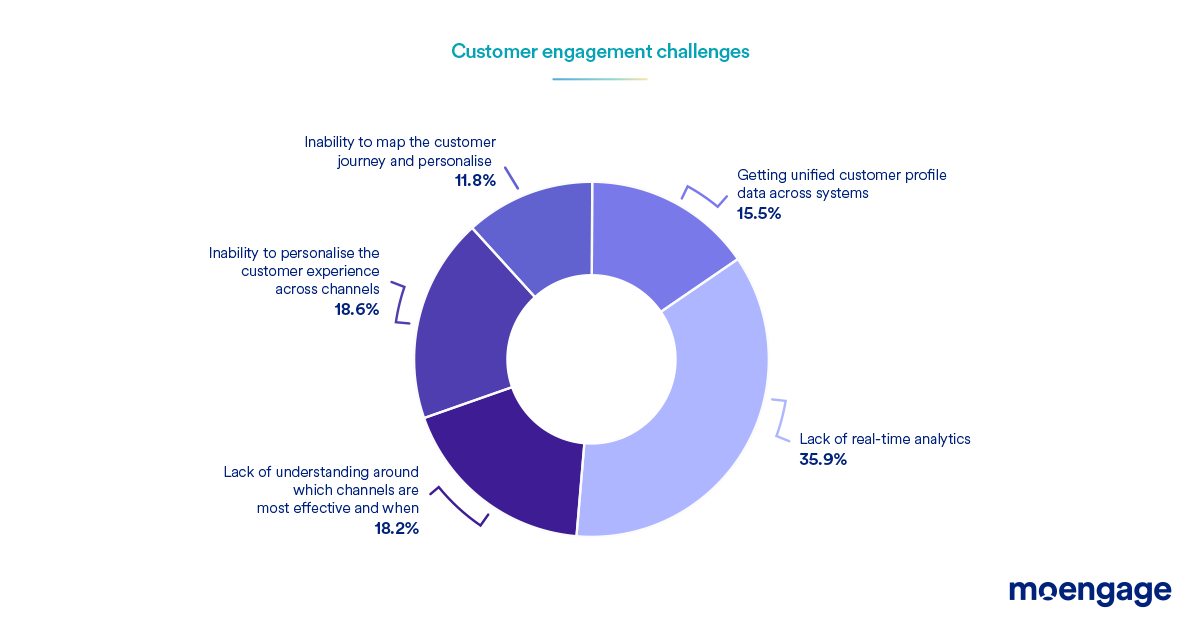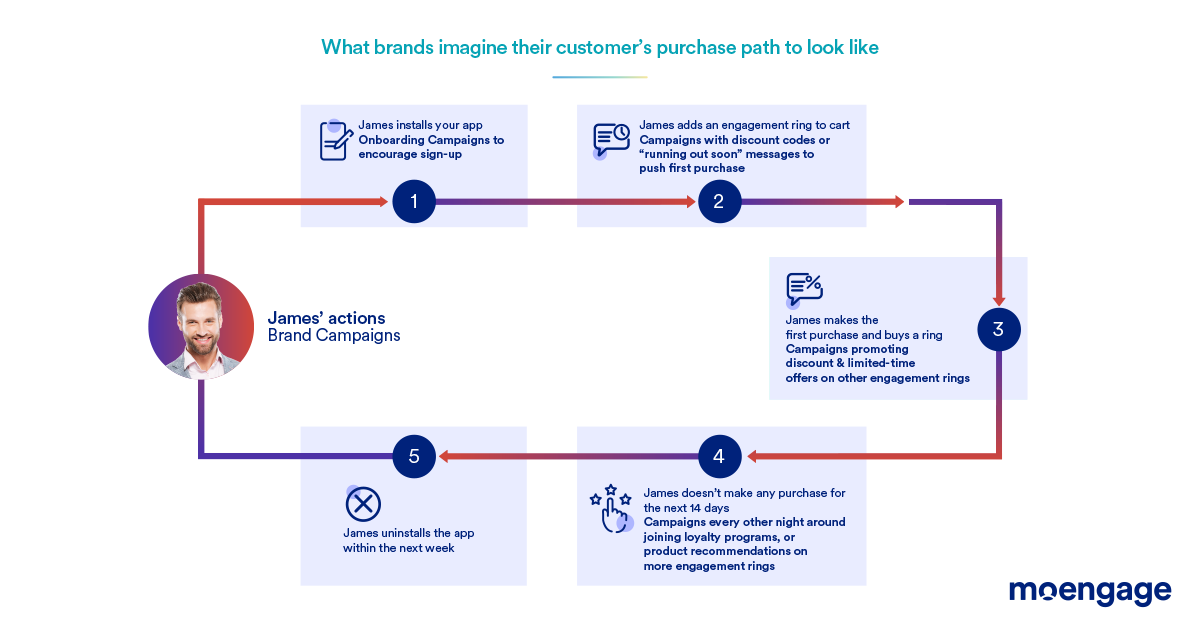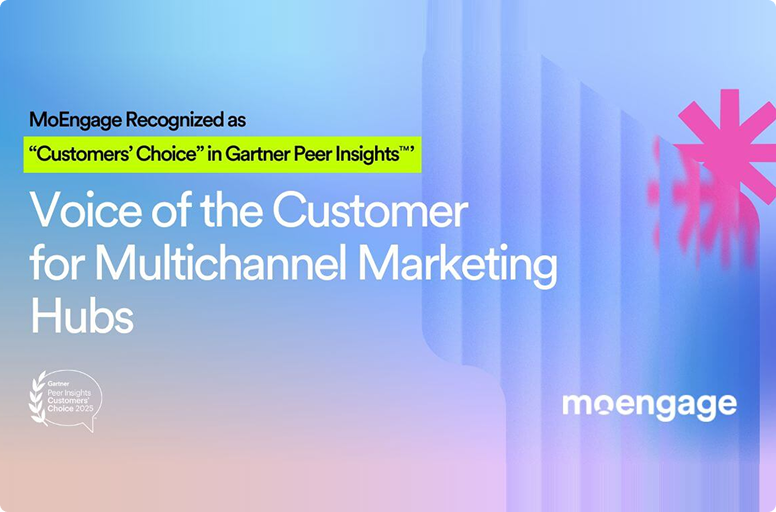🔥 The Customer Engagement Book: Adapt or Die is live!
Download Now
Uncover the customer, journey, and campaign insights captured
Insights on the current customer engagement landscape and challenges
How do marketers use insights to personalise?
Benchmarks from across Fintech, Media and Entertainment, Telecom, Consumer Shopping, Ed-tech, and Grocery
Actionable strategies to transition from a campaign-centric approach to an insights-led approach


We surveyed 2000+ marketers to gauge their readiness to adapt to the Insights-led future of customer engagement.

Around 36% of the respondents stated that getting real-time analytics was their top challenge, followed by an inability to personalise the customer experience across channels (18.6%).

Most brands send campaigns based on a standard flow of lifecycle campaigns; not using insights to understand customer preference and behaviour to fuel personalised campaigns leads to customers disengaging with the brand.

Why is there a need to move from campaign-centric to customer-centric engagement?
Typically, customer engagement is looked at through a very campaign-focused, hypothesis-driven lens. These engagement campaigns might run on a marketer’s idea of what the customer really wants, so the results only have a short-term impact. The report’s findings back this statement, where the majority (40.1%) of European marketers measure the optimal path to conversion while missing out on more customer-centric insights such as drop-off moments and AHA moments, which can provide a deeper look at why customers are behaving the way they do. The customer insights-led engagement approach considers their preferences, behaviour, existing data, and buyer patterns across various channels.
What do you mean by insights-led engagement? How is it different when compared to the current engagement approach?
The current engagement approach has marketers plan campaigns, run them, analyse the results these campaigns garnered and course-correct. This approach has the customer sidelined. On the other hand, the insights-led engagement approach is a continuous loop that uses behaviour, preferences or affinity to generate real-time insights by monitoring customer behaviour, existing data, and buyer patterns across various channels. It is also built to analyse data at scale and leverage it to predict customer behaviour in the future.
Why isn’t demographic data good enough to run personalised engagement campaigns?
23.7% of European marketers primarily measure customer demographic data. While it is a good start, it is table stakes. Grouping customers based on simple demographic information can lead to brands making blanket assumptions about customers. Focussing on behavioural data and predicting customer actions is imperative to engaging with customers effectively.
What insights does the report contain?
The report contains survey findings on the current customer engagement landscape, the challenges faced by European marketers while planning engagement efforts, what factors do they currently base their engagement campaigns on, what insights they capture when it comes to journey, campaign and customer insights, as well as how they personalise engagement.



MoEngage is an insights-led platform trusted by 1,350+ global brands like McAfee, Flipkart, Domino’s, Nestle, Deutsche Telekom, and more. MoEngage’s powerful analytics, personalization, and AI capabilities give a 360-degree view of your customers and help you create journeys across digital channels.
© Copyright 2025 MoEngage. All Rights Reserved.

Please wait while you are redirected to the right page...
